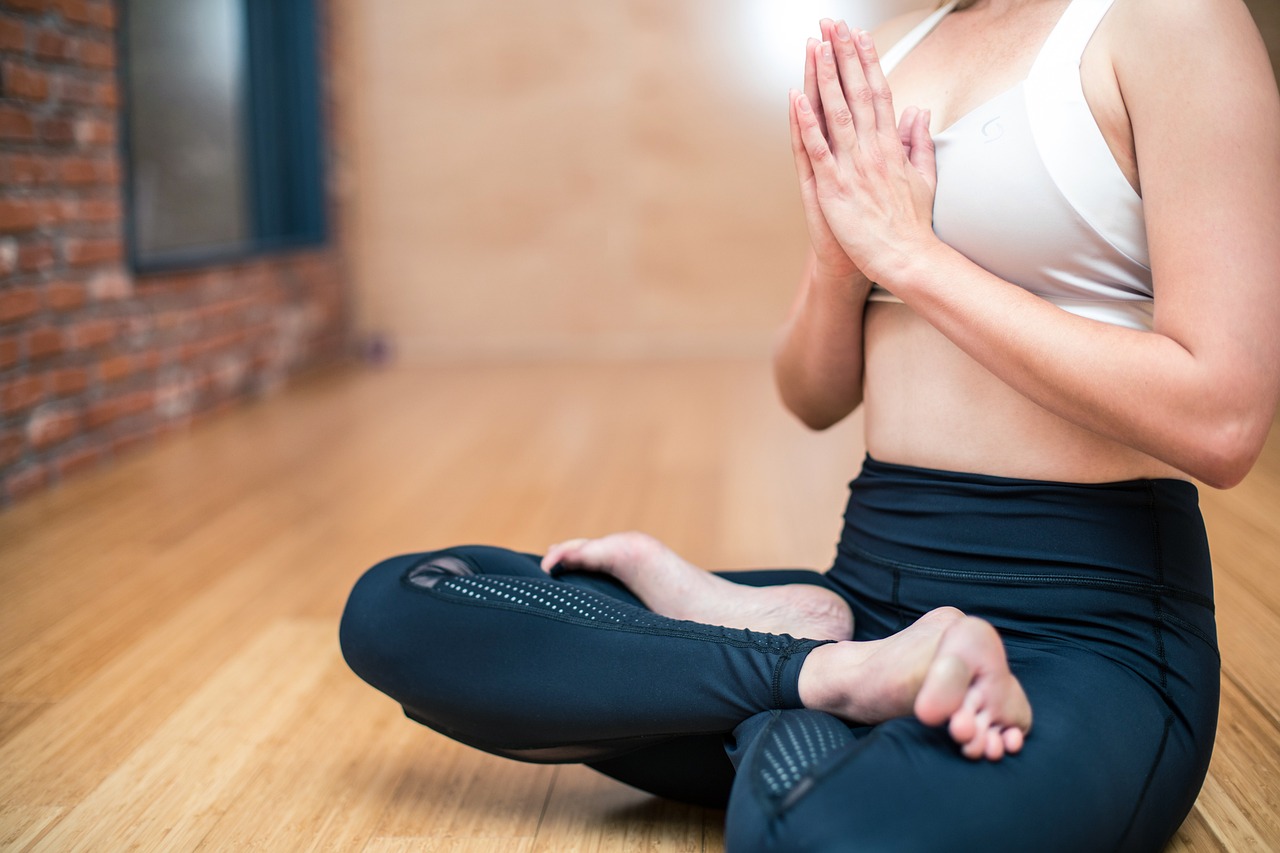
Cultivating Mindfulness: An Introduction To Meditation Practices

Are you feeling overwhelmed by the constant distractions and endless to-do lists? In the fast-paced world we live in today, it can be challenging to find peace and stay focused. That’s why cultivating mindfulness through meditation practices has become increasingly popular. By dedicating just a few minutes each day to engage in these techniques, you can develop the ability to stay present and concentrate on your tasks, ultimately allowing you to eliminate distractions and find a sense of calm in your everyday life. In this article, we will explore the fundamentals of mindfulness and introduce you to various meditation practices that can empower you to achieve a greater sense of inner peace and clarity. So, are you ready to embark on this transformative journey of self-discovery and open the door to a more mindful existence? Let’s begin!
Benefits of Mindfulness
Reduced stress and anxiety
Mindfulness is known to be an effective tool in reducing stress and anxiety. By practicing mindfulness, you learn to focus on the present moment and acknowledge your thoughts and emotions without judgment. This helps you develop a sense of calm and relaxation, reducing the impact of stressors in your life. Mindfulness allows you to observe your thoughts and feelings from a distance, giving you the ability to respond in a more measured and positive way.
Improved focus and concentration
One of the key benefits of mindfulness is improved focus and concentration. When you practice mindfulness, you train your mind to stay in the present moment, rather than getting lost in thoughts about the past or future. This can greatly enhance your ability to concentrate on tasks at hand and be fully present in whatever you are doing.
Enhanced self-awareness
Mindfulness cultivates self-awareness, which is the ability to fully understand and be conscious of your thoughts, emotions, and behaviors. By practicing mindfulness, you become more in tune with your own thoughts and feelings, allowing you to better understand yourself and your motivations. This self-awareness can lead to personal growth and development, as well as improved relationships and communication.
Improved mental and emotional well-being
Mindfulness has been shown to have a positive impact on mental and emotional well-being. By practicing mindfulness, you can develop a greater sense of overall well-being and happiness. Mindfulness helps you to become more in touch with your emotions and to accept them without judgment. This can lead to a reduction in negative emotions such as anger, resentment, and anxiety, and an increase in positive emotions such as gratitude, joy, and contentment.
Mindfulness vs Meditation
Understanding the difference
Mindfulness and meditation are often used interchangeably, but they are not exactly the same thing. While mindfulness is a state of awareness, meditation is the practice or technique used to cultivate mindfulness. Mindfulness is the goal, while meditation is the means to achieving that goal. So, while mindfulness can be practiced at any time throughout the day, meditation is a dedicated practice that helps train the mind to be more present and focused.
How they complement each other
Mindfulness and meditation complement each other in that meditation is the practice that helps develop and cultivate mindfulness. By incorporating meditation into your daily routine, you can strengthen your ability to be present and mindful throughout the day. Regular meditation practice enhances your mindfulness skills, making it easier to stay focused and attentive in the present moment.
Types of Meditation Practices
Mindfulness meditation
Mindfulness meditation is the most commonly practiced form of meditation. It involves focusing your attention on the present moment, observing your thoughts and sensations without judgment. Mindfulness meditation can be done sitting, lying down, or even while engaging in daily activities.
Loving-kindness meditation
Loving-kindness meditation is a practice that involves cultivating feelings of love, compassion, and kindness towards yourself and others. It typically involves repeating affirming statements or visualizing sending love and kindness to oneself and others. This practice helps develop empathy, compassion, and a positive outlook towards oneself and others.
Transcendental meditation
Transcendental meditation is a technique that involves the use of a mantra, which is a word or phrase repeated silently in the mind, to achieve a state of deep relaxation and inner peace. This practice is often done for 15-20 minutes twice a day, and can help reduce stress, promote relaxation, and enhance overall well-being.
Guided meditation
Guided meditation involves following along with a recorded audio or a meditation app that provides instructions and guidance. This type of meditation is especially helpful for beginners, as it provides structure and support throughout the practice. Guided meditation can involve various techniques, such as visualization, body scanning, or breathing exercises.
Getting Started with Meditation
Setting aside dedicated time
To start incorporating meditation into your daily routine, it’s important to set aside dedicated time for the practice. Choose a time of day when you can be consistent and uninterrupted, whether it’s early in the morning, during lunch break, or in the evening before bed. By prioritizing and scheduling meditation time, you ensure that it becomes a regular part of your routine.
Creating a comfortable meditation space
Having a dedicated meditation space can enhance your practice by providing a peaceful and calming environment. Find a quiet corner in your home or office where you can create a space that promotes relaxation and focus. You can include elements such as cushions or a meditation bench, soft lighting, and calming decor. Designating a specific area for meditation helps signal to your mind that it’s time to unwind and be present.
Choosing a suitable meditation technique
With the wide range of meditation techniques available, it’s important to choose one that resonates with you and meets your specific needs and goals. Consider your preferences and interests, as well as any challenges or areas of focus you want to address. Experiment with different techniques, such as mindfulness meditation, loving-kindness meditation, or guided meditation, to find the one that feels right for you.
Beginning with short sessions
When starting out with meditation, it’s recommended to begin with short sessions, such as 5-10 minutes, and gradually increase the duration as you become more comfortable and skilled. Starting with shorter sessions helps build consistency and prevents overwhelm. As you develop a regular meditation habit, you can gradually extend the length of your practice to reap even more benefits.
Mindfulness Meditation Techniques
Body scan meditation
Body scan meditation involves systematically focusing your attention on different parts of your body, from head to toe, and observing any sensations or discomfort without judgment. This practice helps promote relaxation, body awareness, and release tension or stress held in the body.
Breathing meditation
Breathing meditation involves focusing your attention on the sensations of your breath, such as the rise and fall of your abdomen or the feeling of air passing through your nostrils. By anchoring your attention on the breath, you train your mind to stay present and cultivate a sense of calm and centeredness.
Walking meditation
Walking meditation is a practice that involves paying attention to the physical sensations and movements of walking. As you walk slowly and deliberately, you can focus on the feeling of your feet touching the ground, the movement of your legs, and the rhythm of your steps. Walking meditation can be done indoors or outdoors and offers an opportunity to combine mindfulness with physical activity.
Open awareness meditation
Open awareness meditation involves being fully present and aware of whatever arises in your experience, without judgment or attachment. Instead of focusing on a specific object or sensation, you simply observe and accept whatever thoughts, emotions, or sensations come into your awareness. This practice cultivates a sense of spaciousness and acceptance.
Loving-Kindness Meditation
Practicing compassion and kindness towards oneself
Loving-kindness meditation begins with cultivating feelings of love, compassion, and kindness towards oneself. By repeating affirming statements or visualizing sending loving energy towards oneself, you foster self-acceptance and self-compassion. This practice helps counteract negative self-talk, increase self-esteem, and cultivate a positive self-image.
Extending love and compassion to others
After directing loving-kindness towards oneself, the practice expands to include sending love, compassion, and kindness to others. This involves visualizing specific individuals and silently wishing them well-being and happiness. By cultivating feelings of love and compassion towards others, you can develop empathy, connectedness, and a greater sense of interdependence.
Transcendental Meditation
Using a mantra to achieve a state of deep relaxation
Transcendental meditation involves using a mantra, a specific word or phrase, as a point of focus to quiet the mind and achieve a state of deep relaxation. The mantra is repeated silently in the mind, allowing the mind to settle into a state of calm and stillness. The repetition of the mantra helps redirect attention away from thoughts and distractions, promoting a sense of inner peace and tranquility.
Benefits and drawbacks of transcendental meditation
Transcendental meditation has been shown to have numerous benefits, including reduced stress, improved focus, and enhanced overall well-being. It can be practiced by people of all ages and does not require any particular beliefs or religious affiliation. However, some individuals may find the reliance on a mantra to be restrictive or prefer more freedom in their meditation practice. It’s important to choose a meditation technique that aligns with your preferences and needs.
Guided Meditation
Following audio recordings or meditation apps
Guided meditation involves following along with an audio recording or a meditation app that provides instructions and guidance throughout the practice. This type of meditation is particularly helpful for beginners, as it offers structure and support. By listening to a guided meditation, you can focus on the instructions and allow yourself to be guided through the practice, without having to worry about what to do next.
Guided visualization and relaxation techniques
Guided meditation often incorporates visualization and relaxation techniques to help induce a state of deep relaxation and focus. By visualizing peaceful scenes or engaging in relaxation exercises, such as progressive muscle relaxation, you can promote a sense of calm and tranquility. Guided meditation is a versatile practice that can be adapted to suit different needs and preferences.
Incorporating Mindfulness Into Daily Life
Bringing mindfulness to everyday activities
Mindfulness can be incorporated into daily life by bringing awareness and attention to everyday activities. Whether it’s brushing your teeth, eating a meal, or taking a shower, you can practice mindfulness by fully engaging your senses and being present in the moment. By focusing on the sights, sounds, tastes, and physical sensations of these activities, you can develop a greater sense of appreciation and fulfillment in your daily life.
Mindful eating and mindful movement
Mindful eating involves paying attention to the flavors, textures, and sensations of the food you eat, as well as your body’s hunger and fullness cues. By slowing down and savoring each bite, you can cultivate a healthier relationship with food and enjoy a more satisfying eating experience. Similarly, mindful movement involves being fully present and aware of the sensations and movements of your body during physical activities like yoga, walking, or dancing.
Implementing mindfulness at work or school
Mindfulness can also be applied to work or school environments to enhance focus, productivity, and overall well-being. By taking short mindfulness breaks throughout the day, you can recharge your energy and reduce stress. This can be as simple as taking a few deep breaths, practicing a brief meditation, or engaging in a quick body scan. Mindfulness practices can also improve interpersonal relationships and communication skills, fostering a more supportive and mindful work or school culture.
Overcoming Common Challenges
Dealing with a wandering mind
It’s common for the mind to wander during meditation, and this can be a source of frustration or self-judgment. However, it’s important to remember that the practice of meditation is not about stopping thoughts, but rather about observing them without judgment and bringing the focus back to the present moment. When the mind wanders, gently redirect your attention back to the chosen point of focus, such as the breath or a mantra, and continue with the practice.
Frustration with slow progress
Meditation is a skill that takes time and patience to develop. It’s natural to experience moments of frustration or impatience with the progress. However, it’s important to shift your mindset and remember that meditation is not about achieving immediate results or reaching a specific goal. Instead, focus on the process and the present moment, embracing each meditation session as an opportunity for growth and self-discovery.
Finding motivation to maintain regular practice
Maintaining a regular meditation practice can be challenging, especially when life gets busy or motivation wanes. To stay motivated, remind yourself of the benefits you have experienced from practicing mindfulness and meditation. Set realistic goals and create a routine that works for you. Find accountability by meditating with a friend or joining a meditation group. Additionally, explore different variations of meditation to keep your practice fresh and engaging.
By incorporating mindfulness and meditation into your daily life, you can experience the numerous benefits they offer. Reduced stress and anxiety, improved focus and concentration, enhanced self-awareness, and improved mental and emotional well-being are just a few of the positive outcomes you can expect. With a willingness to start small, explore different techniques, and stay consistent, you can cultivate mindfulness and transform your life.






















